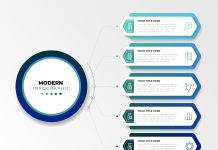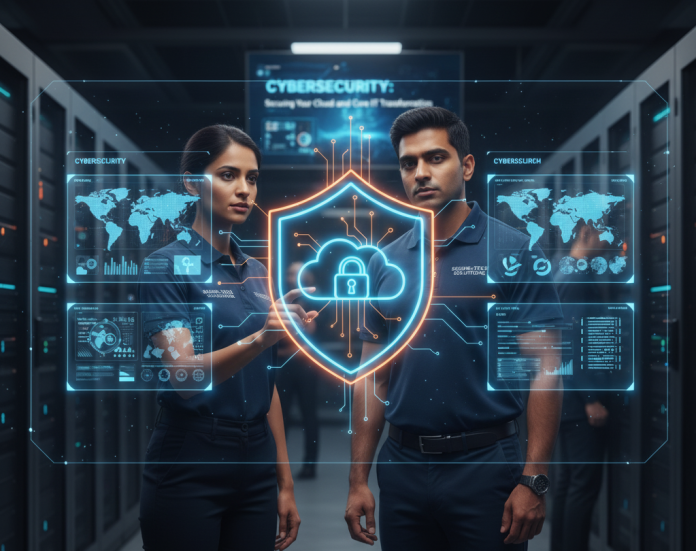As enterprises accelerate digital transformation, one question keeps business leaders awake at night, “Is our data truly secure in the cloud?”
The rise of hybrid work, cloud-first strategies, and interconnected IT systems has created unprecedented opportunities for growth, but also opened new gateways for cyber threats.
Cybersecurity has evolved from being a technical concern to a boardroom priority. Modern organizations are integrating advanced security frameworks into every stage of their cloud migration and IT modernization journey. The result? A smarter, more resilient, and compliant enterprise ecosystem.
This blog explores how organizations can strengthen cybersecurity while transforming their core IT infrastructure and embracing the cloud.
1. Understanding Cybersecurity in the Modern Enterprise
Today’s business landscape is defined by interconnected systems, APIs, and multi-cloud architectures. While this creates operational agility, it also multiplies the threat surface.
What Cybersecurity Really Means Today
- Protecting data, systems, and digital assets from unauthorized access, attacks, and damage.
- Aligning compliance frameworks (GDPR, ISO 27001, SOC 2, etc.) with enterprise workflows.
- Building a culture of security by design across all business units.
Cybersecurity is not just about installing firewalls; it’s about proactively managing risk across your entire digital ecosystem.
2. Why Cybersecurity Is the Backbone of Cloud Transformation
Cloud adoption promises flexibility, scalability, and innovation, but only when security is integrated from the ground up.
Key Security Risks in Cloud Environments
- Data breaches due to misconfigured storage or APIs.
- Identity theft through weak access control policies.
- Shadow IT where employees use unsanctioned apps.
- Ransomware and malware attacks targeting remote infrastructure.
Securing Cloud Migration
- Conduct a comprehensive risk assessment before migration.
- Implement multi-factor authentication (MFA) and identity access management (IAM).
- Use end-to-end encryption for data in transit and at rest.
- Partner with certified cloud providers (AWS, Azure, GCP) with robust compliance protocols.
3. Building a Zero Trust Security Framework
Traditional perimeter-based security models no longer work. The Zero Trust Framework, “Never trust, always verify”, is now the global standard.
- Core Principles of Zero Trust
- Continuous verification of every user and device.
- Least privilege access enforcement.
- Real-time monitoring and behavioral analytics.
Benefits for B2B Enterprises
- Minimizes lateral movement of threats.
- Simplifies compliance reporting.
- Reduces insider threat potential.
Zero Trust empowers enterprises to safeguard hybrid and multi-cloud infrastructures without compromising agility.
4. Integrating Cybersecurity into Core IT Modernization
Cybersecurity should evolve in parallel with IT transformation. As enterprises adopt microservices, DevOps, and containerized environments, they must embed security controls within every phase of modernization.
Steps to Integrate Cybersecurity
- Embed DevSecOps practices security as code.
- Regularly audit legacy systems for vulnerabilities.
- Deploy endpoint protection for remote and on-site devices.
- Adopt security orchestration, automation, and response (SOAR) tools for faster incident handling.
Cybersecurity integration transforms IT modernization from a risk to a competitive advantage.
5. The Role of AI and Automation in Cyber Defense
AI and machine learning are reshaping cybersecurity by detecting anomalies and responding faster than human teams.
- Predictive threat intelligence powered by big data analytics.
- Automated incident response to neutralize attacks instantly.
- Adaptive authentication that analyzes user behavior to detect suspicious activity.
By combining AI-driven security with automation, enterprises can reduce detection time from weeks to minutes, saving millions in potential damage.
6. Overcoming Key Cybersecurity Challenges in Cloud Environments
Despite robust frameworks, organizations face persistent barriers in executing effective cybersecurity strategies.
Major Challenges
- Complex multi-cloud management increases blind spots.
- Skill shortages in cybersecurity professionals.
- Evolving compliance demands across regions.
- Insider threats due to human error or negligence.
Actionable Solutions
- Invest in cybersecurity awareness training for employees.
- Implement continuous monitoring tools.
- Adopt a shared responsibility model with cloud vendors.
- Use automated compliance tracking systems to stay audit-ready.
7. Future Outlook: The Next Era of Secure Digital Enterprises
The future of cybersecurity lies in proactive, predictive defense. As technologies like quantum computing, edge AI, and 5G evolve, so will the complexity of cyber threats.
Forward-looking enterprises are already:
- Integrating security-first culture across all departments.
- Investing in threat intelligence partnerships.
- Moving toward self-healing systems capable of autonomously mitigating risks.
In the digital future, cybersecurity will be synonymous with business resilience.
Conclusion
Cybersecurity is no longer an IT checkbox, it’s the foundation of sustainable digital transformation.
For enterprises undergoing cloud and IT modernization, prioritizing robust cybersecurity measures ensures business continuity, regulatory compliance, and customer trust.
In short, the enterprises that secure smarter will lead faster.
I hope you find the above content helpful. For more such informative content, please visit Techedgedemand.
FAQs
1. What is the importance of cybersecurity in digital transformation?
Cybersecurity ensures that as enterprises digitize operations, their systems, data, and networks remain protected from evolving cyber threats.
2. How does Zero Trust improve enterprise security?
It enforces strict identity verification for every user and device, minimizing unauthorized access and internal breaches.
3. Can AI completely replace human cybersecurity teams?
No, AI enhances detection and response speed but still requires human oversight for decision-making and strategic defense planning.
4. How do companies secure multi-cloud environments?
Through unified monitoring tools, IAM systems, encryption, and compliance-based access control policies.
5. What industries are most affected by cybersecurity breaches?
Finance, healthcare, manufacturing, and government sectors face the highest cybersecurity risks due to sensitive data exposure.












